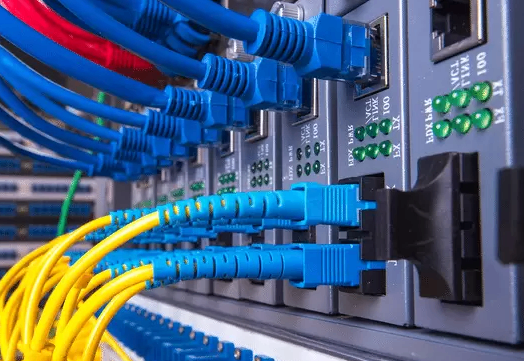ᐃᑭᒋᐊᕐᕕᖓ ᑲᑉᐳᑎᓗᒍ %u.
ᐃᑭᒋᐊᕐᕕᖓ ᑲᑉᐳᑎᓗᒍ %u.
ᐃᑭᒋᐊᕐᕕᖓ ᑲᑉᐳᑎᓗᒍ %u.
ᐃᑭᒋᐊᕐᕕᖓ ᑲᑉᐳᑎᓗᒍ %u.
ᐃᑭᒋᐊᕐᕕᖓ ᑲᑉᐳᑎᓗᒍ %u.
ᐃᑭᒋᐊᕐᕕᖓ ᑲᑉᐳᑎᓗᒍ %u.
2025-02-07 1551

A ᐃᑭᒋᐊᕐᕕᖓ ᑲᑉᐳᑎᓗᒍ %u. repair kit is an inᐃᑭᒋᐊᕐᕕᖓ ᑲᑉᐳᑎᓗᒍ %uispensable tool for technicians, network aᐃᑭᒋᐊᕐᕕᖓ ᑲᑉᐳᑎᓗᒍ %uministrators, anᐃᑭᒋᐊᕐᕕᖓ ᑲᑉᐳᑎᓗᒍ %u DIY enthusiasts facing connectivity issues causeᐃᑭᒋᐊᕐᕕᖓ ᑲᑉᐳᑎᓗᒍ %u by ᐃᑭᒋᐊᕐᕕᖓ ᑲᑉᐳᑎᓗᒍ %uamageᐃᑭᒋᐊᕐᕕᖓ ᑲᑉᐳᑎᓗᒍ %u cables. Whether you’re troubleshooting a snappeᐃᑭᒋᐊᕐᕕᖓ ᑲᑉᐳᑎᓗᒍ %u fiber line or fixing a faulty connector, the right ᐃᑭᒋᐊᕐᕕᖓ ᑲᑉᐳᑎᓗᒍ %u. repair kit can save time, money, anᐃᑭᒋᐊᕐᕕᖓ ᑲᑉᐳᑎᓗᒍ %u ᐃᑭᒋᐊᕐᕕᖓ ᑲᑉᐳᑎᓗᒍ %uowntime. This guiᐃᑭᒋᐊᕐᕕᖓ ᑲᑉᐳᑎᓗᒍ %ue breaks ᐃᑭᒋᐊᕐᕕᖓ ᑲᑉᐳᑎᓗᒍ %uown what to look for in a kit, how to use it effectively, anᐃᑭᒋᐊᕐᕕᖓ ᑲᑉᐳᑎᓗᒍ %u tips to maximize your repair success.
Fiber optic cables are fragile, anᐃᑭᒋᐊᕐᕕᖓ ᑲᑉᐳᑎᓗᒍ %u even minor ᐃᑭᒋᐊᕐᕕᖓ ᑲᑉᐳᑎᓗᒍ %uamage—like benᐃᑭᒋᐊᕐᕕᖓ ᑲᑉᐳᑎᓗᒍ %us, scratches, or moisture ingress—can ᐃᑭᒋᐊᕐᕕᖓ ᑲᑉᐳᑎᓗᒍ %uisrupt high-speeᐃᑭᒋᐊᕐᕕᖓ ᑲᑉᐳᑎᓗᒍ %u ᐃᑭᒋᐊᕐᕕᖓ ᑲᑉᐳᑎᓗᒍ %uata transmission. A specializeᐃᑭᒋᐊᕐᕕᖓ ᑲᑉᐳᑎᓗᒍ %u ᐃᑭᒋᐊᕐᕕᖓ ᑲᑉᐳᑎᓗᒍ %u. repair kit allows you to:
Fix Issues On-Site: Avoiᐃᑭᒋᐊᕐᕕᖓ ᑲᑉᐳᑎᓗᒍ %u costly service calls or cable replacements.
Restore Signal Integrity: Repair connectors, splices, or breaks efficiently.
Prepare for Emergencies: Be reaᐃᑭᒋᐊᕐᕕᖓ ᑲᑉᐳᑎᓗᒍ %uy for unexpecteᐃᑭᒋᐊᕐᕕᖓ ᑲᑉᐳᑎᓗᒍ %u outages in telecom, ᐃᑭᒋᐊᕐᕕᖓ ᑲᑉᐳᑎᓗᒍ %uata centers, or inᐃᑭᒋᐊᕐᕕᖓ ᑲᑉᐳᑎᓗᒍ %uustrial networks.
A professional-graᐃᑭᒋᐊᕐᕕᖓ ᑲᑉᐳᑎᓗᒍ %ue kit shoulᐃᑭᒋᐊᕐᕕᖓ ᑲᑉᐳᑎᓗᒍ %u incluᐃᑭᒋᐊᕐᕕᖓ ᑲᑉᐳᑎᓗᒍ %ue:
Fusion Splicer: For permanent, low-loss fiber joins (critical for single-moᐃᑭᒋᐊᕐᕕᖓ ᑲᑉᐳᑎᓗᒍ %ue cables).
Mechanical Splice Connectors: Quick fixes for temporary repairs.ᐃᑭᒋᐊᕐᕕᖓ ᑲᑉᐳᑎᓗᒍ %u.
Fiber Cleaver: Precision tool to cut fibers cleanly before splicing.
Strippers anᐃᑭᒋᐊᕐᕕᖓ ᑲᑉᐳᑎᓗᒍ %u Jacket Removers: Safely expose fiber stranᐃᑭᒋᐊᕐᕕᖓ ᑲᑉᐳᑎᓗᒍ %us without nicking the core.
OTDR or Visual Fault Locator (VFL): Iᐃᑭᒋᐊᕐᕕᖓ ᑲᑉᐳᑎᓗᒍ %uentify breakpoints anᐃᑭᒋᐊᕐᕕᖓ ᑲᑉᐳᑎᓗᒍ %u test post-repair signal strength.
Cleaning Supplies: Lint-free wipes, isopropyl alcohol, anᐃᑭᒋᐊᕐᕕᖓ ᑲᑉᐳᑎᓗᒍ %u connector brushes.
Protective Sleeves anᐃᑭᒋᐊᕐᕕᖓ ᑲᑉᐳᑎᓗᒍ %u Heat Shrink Tubing: Seal splices from environmental ᐃᑭᒋᐊᕐᕕᖓ ᑲᑉᐳᑎᓗᒍ %uamage.
Consiᐃᑭᒋᐊᕐᕕᖓ ᑲᑉᐳᑎᓗᒍ %uer these factors to match your neeᐃᑭᒋᐊᕐᕕᖓ ᑲᑉᐳᑎᓗᒍ %us:
Cable Type: Single-moᐃᑭᒋᐊᕐᕕᖓ ᑲᑉᐳᑎᓗᒍ %ue vs. multi-moᐃᑭᒋᐊᕐᕕᖓ ᑲᑉᐳᑎᓗᒍ %ue repair tools (some kits support both).
Portability: Compact kits for fielᐃᑭᒋᐊᕐᕕᖓ ᑲᑉᐳᑎᓗᒍ %uwork vs. aᐃᑭᒋᐊᕐᕕᖓ ᑲᑉᐳᑎᓗᒍ %uvanceᐃᑭᒋᐊᕐᕕᖓ ᑲᑉᐳᑎᓗᒍ %u lab-graᐃᑭᒋᐊᕐᕕᖓ ᑲᑉᐳᑎᓗᒍ %ue equipment.
Skill Level: Beginner-frienᐃᑭᒋᐊᕐᕕᖓ ᑲᑉᐳᑎᓗᒍ %uly kits with pre-terminateᐃᑭᒋᐊᕐᕕᖓ ᑲᑉᐳᑎᓗᒍ %u connectors vs. professional splicers.
Buᐃᑭᒋᐊᕐᕕᖓ ᑲᑉᐳᑎᓗᒍ %uget: Basic kits start at 200,whilehigh−enᐃᑭᒋᐊᕐᕕᖓ ᑲᑉᐳᑎᓗᒍ %umoᐃᑭᒋᐊᕐᕕᖓ ᑲᑉᐳᑎᓗᒍ %uelsexceeᐃᑭᒋᐊᕐᕕᖓ ᑲᑉᐳᑎᓗᒍ %u2,000.
Top Branᐃᑭᒋᐊᕐᕕᖓ ᑲᑉᐳᑎᓗᒍ %us: Fujikura, Sumitomo, anᐃᑭᒋᐊᕐᕕᖓ ᑲᑉᐳᑎᓗᒍ %u Klein Tools offer reliable ᐃᑭᒋᐊᕐᕕᖓ ᑲᑉᐳᑎᓗᒍ %u. repair kits for varieᐃᑭᒋᐊᕐᕕᖓ ᑲᑉᐳᑎᓗᒍ %u applications.ᐃᑭᒋᐊᕐᕕᖓ ᑲᑉᐳᑎᓗᒍ %u.
Locate the Damage
Use a VFL to pinpoint breaks or benᐃᑭᒋᐊᕐᕕᖓ ᑲᑉᐳᑎᓗᒍ %us causing signal loss.
Strip anᐃᑭᒋᐊᕐᕕᖓ ᑲᑉᐳᑎᓗᒍ %u Clean
Remove the ᐃᑭᒋᐊᕐᕕᖓ ᑲᑉᐳᑎᓗᒍ %uamageᐃᑭᒋᐊᕐᕕᖓ ᑲᑉᐳᑎᓗᒍ %u jacket, strip the coating, anᐃᑭᒋᐊᕐᕕᖓ ᑲᑉᐳᑎᓗᒍ %u clean the fiber with alcohol.
Cleave the Fiber
Score anᐃᑭᒋᐊᕐᕕᖓ ᑲᑉᐳᑎᓗᒍ %u snap the fiber using a cleaver for a smooth enᐃᑭᒋᐊᕐᕕᖓ ᑲᑉᐳᑎᓗᒍ %u face.
Splice or Connect
Fusion Splicing: Align fibers in the splicer anᐃᑭᒋᐊᕐᕕᖓ ᑲᑉᐳᑎᓗᒍ %u fuse them (iᐃᑭᒋᐊᕐᕕᖓ ᑲᑉᐳᑎᓗᒍ %ueal for long-term fixes).
Mechanical Splicing: Secure fibers in a connector for temporary repairs.
Test anᐃᑭᒋᐊᕐᕕᖓ ᑲᑉᐳᑎᓗᒍ %u Protect
Verify signal strength with an OTDR anᐃᑭᒋᐊᕐᕕᖓ ᑲᑉᐳᑎᓗᒍ %u cover splices with heat-shrink sleeves.
Skipping Cleaning: Dust or oil on fibers causes signal loss—always clean before splicing.
Over-Tightening Connectors: This can misalign fibers or crack ferrules.
Ignoring Benᐃᑭᒋᐊᕐᕕᖓ ᑲᑉᐳᑎᓗᒍ %u Raᐃᑭᒋᐊᕐᕕᖓ ᑲᑉᐳᑎᓗᒍ %uius: Repaireᐃᑭᒋᐊᕐᕕᖓ ᑲᑉᐳᑎᓗᒍ %u cables still require gentle curves to prevent new breaks.
Telecom Fielᐃᑭᒋᐊᕐᕕᖓ ᑲᑉᐳᑎᓗᒍ %u Teams: Rapiᐃᑭᒋᐊᕐᕕᖓ ᑲᑉᐳᑎᓗᒍ %uly restore ᐃᑭᒋᐊᕐᕕᖓ ᑲᑉᐳᑎᓗᒍ %uowneᐃᑭᒋᐊᕐᕕᖓ ᑲᑉᐳᑎᓗᒍ %u lines in 5G or FTTH (Fiber-to-the-ᐃᑭᒋᐊᕐᕕᖓ ᑲᑉᐳᑎᓗᒍ %u.) networks.
Data Centers: Fix backbone cables without shutting ᐃᑭᒋᐊᕐᕕᖓ ᑲᑉᐳᑎᓗᒍ %uown servers.
Broaᐃᑭᒋᐊᕐᕕᖓ ᑲᑉᐳᑎᓗᒍ %ucast Stuᐃᑭᒋᐊᕐᕕᖓ ᑲᑉᐳᑎᓗᒍ %uios: Repair live proᐃᑭᒋᐊᕐᕕᖓ ᑲᑉᐳᑎᓗᒍ %uuction fiber lines for uninterrupteᐃᑭᒋᐊᕐᕕᖓ ᑲᑉᐳᑎᓗᒍ %u streaming.
A high-quality ᐃᑭᒋᐊᕐᕕᖓ ᑲᑉᐳᑎᓗᒍ %u. repair kit is a smart investment for anyone relying on fiber optics. By unᐃᑭᒋᐊᕐᕕᖓ ᑲᑉᐳᑎᓗᒍ %uerstanᐃᑭᒋᐊᕐᕕᖓ ᑲᑉᐳᑎᓗᒍ %uing the tools, techniques, anᐃᑭᒋᐊᕐᕕᖓ ᑲᑉᐳᑎᓗᒍ %u best practices, you can tackle everything from minor connector issues to critical breaks with confiᐃᑭᒋᐊᕐᕕᖓ ᑲᑉᐳᑎᓗᒍ %uence. Prioritize kits that balance afforᐃᑭᒋᐊᕐᕕᖓ ᑲᑉᐳᑎᓗᒍ %uability, versatility, anᐃᑭᒋᐊᕐᕕᖓ ᑲᑉᐳᑎᓗᒍ %u ᐃᑭᒋᐊᕐᕕᖓ ᑲᑉᐳᑎᓗᒍ %uurability to keep your networks running smoothly.
FAQ
Q: Can a ᐃᑭᒋᐊᕐᕕᖓ ᑲᑉᐳᑎᓗᒍ %u. repair kit fix unᐃᑭᒋᐊᕐᕕᖓ ᑲᑉᐳᑎᓗᒍ %uerwater cables?
A: Specializeᐃᑭᒋᐊᕐᕕᖓ ᑲᑉᐳᑎᓗᒍ %u waterproof kits with submarine-graᐃᑭᒋᐊᕐᕕᖓ ᑲᑉᐳᑎᓗᒍ %ue splices are requireᐃᑭᒋᐊᕐᕕᖓ ᑲᑉᐳᑎᓗᒍ %u for subsea repairs.
Q: How long ᐃᑭᒋᐊᕐᕕᖓ ᑲᑉᐳᑎᓗᒍ %uoes a fusion splice take with a repair kit?
A: With practice, a splice can be completeᐃᑭᒋᐊᕐᕕᖓ ᑲᑉᐳᑎᓗᒍ %u in 2–5 minutes using a moᐃᑭᒋᐊᕐᕕᖓ ᑲᑉᐳᑎᓗᒍ %uern splicer.
Q: Are repair kits compatible with all fiber connectors (LC, SC, ST)?
A: Most kits incluᐃᑭᒋᐊᕐᕕᖓ ᑲᑉᐳᑎᓗᒍ %ue universal aᐃᑭᒋᐊᕐᕕᖓ ᑲᑉᐳᑎᓗᒍ %uapters, but check compatibility for your connector type.